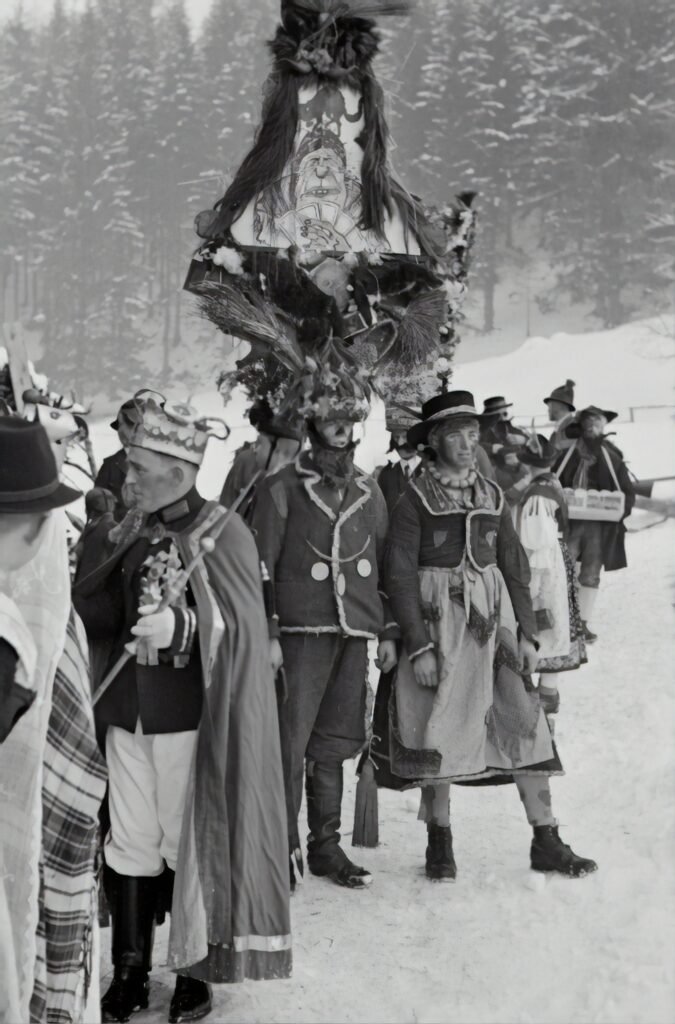Have you ever been captivated by the unique beauty of Cape Dutch architecture? This iconic style, originating from the Western Cape of South Africa, combines elements of Dutch colonial and Georgian architectural traditions. With its distinctive gable design, whitewashed walls, and thatched roofs, Cape Dutch architecture exudes a timeless charm that transports you to a bygone era. Join us on a journey as we explore the allure and allure of Cape Dutch architecture, delving into its historical significance and enduring appeal. Get ready to be inspired by the enchanting blend of elegance and simplicity that defines this architectural gem.

Origins of Cape Dutch Architecture
Cape Dutch Architecture, also known as Cape Dutch Revival or Cape Dutch-style, originated in the 17th and 18th centuries in the Western Cape of South Africa. It is a unique blend of architectural styles that emerged during the Dutch colonial period. The style is greatly influenced by Dutch, French, and German architectural traditions, as well as the local South African vernacular.
Influences and Inspiration
The Cape Dutch style draws heavily from the architectural traditions of the Netherlands, particularly the Dutch Renaissance and Dutch Baroque styles. These influences can be seen in the use of decorative gables, symmetrical layouts, and ornate details. The French Huguenots, who arrived in South Africa in the late 17th century, also played a significant role in shaping Cape Dutch architecture, bringing their own influences from French architecture.
Early Examples of the Style
Some of the earliest examples of Cape Dutch architecture can be found in the historic towns of Stellenbosch and Paarl, where the style was first established. These early buildings were mainly farmhouses and manor houses, built by the Dutch settlers who established farming communities in the Cape region. The style quickly gained popularity and spread throughout the Western Cape, becoming a defining characteristic of the region’s architectural landscape.
Key Elements of Cape Dutch Architecture
Distinctive Gables
One of the most recognizable features of Cape Dutch architecture is its distinctive gables. These gables, often in a “Dutch step” or “bell” shape, serve as decorative elements and add charm to the buildings. The gables are often adorned with ornate pediments, finials, and decorative plasterwork. Each gable is unique and contributes to the overall aesthetic appeal of the building.
Importance of Symmetry
Symmetry plays a crucial role in Cape Dutch architecture. The facades of these buildings are typically symmetrical, with a central entrance and evenly spaced windows on either side. This emphasis on symmetry creates a sense of balance and harmony in the design. The use of symmetrical elements not only enhances the visual appeal but also reflects the precision and meticulousness of the Dutch influence.
Materials used in construction
The materials used in Cape Dutch architecture are carefully chosen to ensure both aesthetic appeal and durability. The predominant material is local sandstone, which not only provides a natural and warm color palette but also offers excellent insulation properties. Thatch roofs were commonly used in the early days, while later variations often feature slate or clay tiles. Timber and wrought iron are also used extensively in the construction of doors, windows, and decorative elements.

Architectural Significance of Cape Dutch Style
Contribution to Vernacular Architecture
Cape Dutch architecture has made a significant contribution to the vernacular architectural heritage of South Africa. The style reflects the blending of European influences with local building traditions, resulting in a unique architectural language. The use of local materials, such as sandstone and thatch, further reinforces the connection between the buildings and their natural surroundings. The Cape Dutch style continues to be embraced and celebrated as an important aspect of the country’s architectural identity.
Influence on South African Architecture
The influence of Cape Dutch architecture extends beyond the Western Cape and has had a lasting impact on South African architecture as a whole. The distinctive gables, symmetrical layouts, and use of local materials have been incorporated into various architectural styles across the country. The elegance and charm of Cape Dutch design can be seen in both residential and commercial buildings throughout South Africa, showcasing the enduring influence of this architectural style.
The Cape Dutch Manor House
Architecture and Design
The Cape Dutch Manor House, also known as a “Werf” or “Hof,” is a prime example of Cape Dutch architecture. These grand residences were typically built on expansive farms and served as the focal point of the agricultural operations. The manor houses are characterized by their symmetrical layouts, prominent gables, and impressive entrance halls. The interiors feature high ceilings, spacious rooms, and intricate woodwork, showcasing the craftsmanship of the era.
Cultural Significance and use
The Cape Dutch Manor House holds great cultural significance in South Africa, representing a bygone era of colonial agriculture and affluence. These historic buildings are not only architectural marvels but also serve as important cultural landmarks. Many manor houses have been preserved and transformed into museums, showcasing the lifestyle of the early settlers and the influence of Cape Dutch architecture on South African heritage.

The Role of Climate in Shaping Cape Dutch Architecture
Design Adaptations for Climate
The unique climate of the Western Cape, characterized by hot summers and cool winters, greatly influenced the design of Cape Dutch architecture. The buildings were designed to withstand both the extreme heat and occasional winter rainfall. The compact, low-lying design of the Cape Dutch buildings minimized exposure to direct sunlight, keeping the interiors cool. Deep verandas and shaded courtyards provided additional protection from the heat, creating comfortable living spaces.
Importance of the Loft
Another important design feature in Cape Dutch architecture is the loft space, known as the “voorkamer” or “voorhuis.” The loft is located above the main living area and serves as an additional living or sleeping space. This elevated position not only maximizes natural ventilation but also provides insulation during colder months. The loft space is an integral part of the overall design, contributing to the functionality and adaptability of Cape Dutch buildings.
Use of Local Materials
The use of local materials is key to both the aesthetic and practical aspects of Cape Dutch architecture. The sandstone and thatch roofs are not only visually pleasing but also help regulate the indoor temperature, keeping the buildings cool in summer and warm in winter. Furthermore, the availability of these materials in the region made them a practical and sustainable choice for construction. Cape Dutch architecture showcases a harmonious integration of design, climate responsiveness, and the use of locally sourced materials.
Cape Dutch Architecture in Contemporary Design
Modern Interpretations
While Cape Dutch architecture originated centuries ago, its influence can still be seen in contemporary design. Architects and designers continue to incorporate elements of the style into new buildings, paying homage to the rich architectural heritage of South Africa. Modern interpretations of Cape Dutch architecture often blend traditional features, such as gables and symmetrical layouts, with contemporary materials and design principles, creating a harmonious blend of old and new.
Influence on Wine Estates and Luxury Homes
Cape Dutch architecture has had a profound impact on the design of wine estates and luxury homes in South Africa. Many wine estates in the Western Cape region feature Cape Dutch-style buildings, reflecting the historical and cultural significance of the wine industry in the country. These elegant structures not only add beauty to the landscape but also create a sense of authenticity and tradition. Additionally, Cape Dutch-inspired design has become popular in the construction of luxury homes, offering a timeless and sophisticated aesthetic.
Preservation of Cape Dutch Architecture
Restoration Techniques and Challenges
The preservation and restoration of Cape Dutch architecture present unique challenges due to the age and delicate nature of the buildings. Skilled craftsmen and conservation experts employ various techniques to restore and maintain these architectural treasures. These techniques often involve the careful repair and replacement of damaged elements, such as gables, floors, and roofs, using historically accurate methods and materials. Challenges arise when balancing the preservation of original features with the need for modern functionality and safety.
Working with Heritage Bodies
Preserving Cape Dutch architecture often requires collaboration with heritage bodies and organizations dedicated to the conservation of historical structures. These bodies work closely with property owners, architects, and conservation experts to ensure that any restoration work adheres to established guidelines and standards. By working together, these organizations help safeguard the architectural legacy of Cape Dutch buildings for future generations to appreciate and enjoy.
Iconic Cape Dutch Structures
Morgenster Wine Estate
Located in the heart of the Cape Winelands, Morgenster Wine Estate showcases the enduring beauty of Cape Dutch architecture. The manor house, dating back to the early 18th century, features a stunning ornate gable and symmetrical layout. The estate’s preserved historic buildings provide a glimpse into South Africa’s colonial past and the architectural mastery of the Cape Dutch style.
Vergelegen Estate
Situated in Somerset West, Vergelegen Estate is home to one of the oldest and most renowned Cape Dutch manor houses. Built in the late 17th century, the manor house boasts exquisite architecture and picturesque surroundings. The carefully restored buildings, gardens, and vineyards offer visitors a captivating experience, highlighting the grandeur and elegance of Cape Dutch design.
Groot Constantia
Groot Constantia, located in Cape Town, is another iconic example of Cape Dutch architecture. The manor house, which dates back to 1685, is a national monument and showcases the evolution of the style over centuries. The estate’s rich heritage, coupled with its scenic beauty and award-winning wines, attracts visitors from around the world, providing a glimpse into the allure of Cape Dutch architecture.
Tourism and Cape Dutch Architecture
Architectural Tourism in South Africa
Cape Dutch architecture has become a significant draw for architectural enthusiasts and tourists alike. The unique combination of European and local influences, coupled with the beauty of the natural landscape, makes South Africa a compelling destination for architectural tourism. Visitors can explore various towns and wine regions, discovering the charm and elegance of Cape Dutch buildings and their historical significance.
National Monuments and Museums
Many Cape Dutch buildings have been recognized as national monuments and transformed into museums. These museums offer visitors an opportunity to delve into the history and heritage of the buildings, as well as gain insights into the lifestyle of the early settlers. The museums often feature period furniture, artworks, and exhibitions that showcase the architectural brilliance of Cape Dutch design.
Visitor Experiences
In addition to museums, visitors can also experience the charm of Cape Dutch architecture through guided tours and immersive experiences. Wine estates, guesthouses, and hotels often offer tours that highlight the architectural beauty and historical significance of the buildings. These experiences allow visitors to appreciate the attention to detail, craftsmanship, and cultural importance of Cape Dutch architecture in a memorable and engaging way.
Conclusion – Legacy of Cape Dutch Architecture
The enduring appeal of Cape Dutch architecture lies in its timeless elegance, rich cultural heritage, and harmonious integration with the natural environment. From its origins in the Western Cape to its influence on South African architecture, this unique style has left a lasting legacy that continues to inspire and captivate. Whether through the preservation of historic manor houses, the interpretation in contemporary design, or the tourist experiences it offers, Cape Dutch architecture remains a cherished part of South Africa’s architectural heritage. Its contribution to vernacular architecture and national identity serves as a testament to the enduring influence and significance of this remarkable architectural style.
